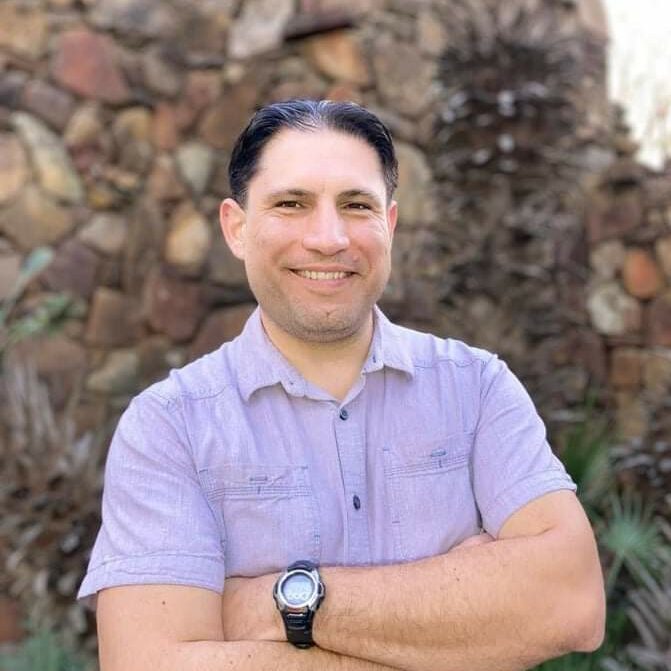No matter how strong and resilient humans are, the mind and body have limits. Just as a body can eventually weaken and suffer consequences after repeated trauma, so can the mind.
If someone continues to endure trauma, they may risk developing Complex PTSD, a mental health condition similar to post-traumatic stress disorder (PTSD) but with differences in underlying causes, symptoms, and comorbidities.
Discover everything you need to know about complex PTSD here, including ways to heal from trauma.
What you should know about CPTSD:
- CPTSD Causes: Prolonged trauma causes Complex PTSD, particularly with ongoing abuse
- PTSD vs CPTSD: Differences from PTSD include continuous trauma and more complex symptoms
- CPTSD Symptoms: Common symptoms are emotional dysregulation, avoidance, and intense reactions
- Treatment for CPTSD: Effective treatments involve talk therapy and lifestyle adjustments
- Coping with CPTSD: Healing focus includes developing emotional regulation and managing stress
What is complex PTSD?
Complex post-traumatic stress disorder (C-PTSD or CPTSD) occurs when a person endures continuous trauma over a long period of time. It’s the continuous nature of CPTSD that causes so much harm, especially if the trauma is caused during childhood, a time when children’s brains are still developing and they don’t yet have the coping skills to deal with distressing events.
They might think the traumatic childhood experiences (for example, physical or sexual abuse) they’re dealing with are normal, or even their fault, but it’s not until later in life that they realize they’re experiencing trauma.
What’s the difference between CPTSD and PTSD?
With just one word differentiating their names, Complex Post-Traumatic Stress Disorder and PTSD have many similarities in terms of symptoms and treatment. But there are some big differences, too.
“CPTSD is a specific type of PTSD in which the trauma experienced is/was ongoing versus it being a singular traumatic event,” shares Alan Deibel, a Grow Therapy licensed clinical professional counselor (LCPC).
To go further in-depth, PTSD is different from CPTSD in the following ways:
- PTSD can develop after short-lived or long-lasting traumatic experiences whereas CPTSD is a result of chronic, long-term exposure to trauma.
- The symptoms of PTSD tend to center more around nightmares, flashbacks, hyperarousal/startle response, paranoia, bursts of emotion, etc.
- Compared to PTSD, CPTSD can take much longer to diagnose, and rehabilitation can require much more time. This can partly be due to the comorbid conditions alongside CPTSD.
Deibel adds, “It’s important to note that C-PTSD is not currently listed as a separate diagnosis in the DSM-5. However, both the ICD-11 and WHO recognize it as a distinct diagnosis. Most mental health practitioners in the USA use the DSM-5 for diagnosis so many people who seek treatment for these concerns will be diagnosed with PTSD.”
Also, if you are diagnosed with PTSD but feel you could be experiencing CPTSD, bring it up with your therapist.
This can help the therapist get a very clear picture of what you are experiencing, and you can work together to determine the most fitting treatment plan for you moving forward.
Living with CPTSD? Build Your Support System
What causes CPTSD?
Whereas PTSD can occur in a person after a single event — such as a car accident, a natural disaster, or a violent attack, to name a few — CPTSD arises when someone has undergone long-term trauma.
The types of chronic trauma that can incur CPTSD include:
- Long-term domestic violence
- Long-term child physical abuse
- Long-term child sexual abuse
- Organized child exploitation rings
- Observing and experiencing routine violence
- Prisoner of War or Concentration camps *
- Residing in an active war zone *
- Prostitution brothels
- Racism, sexism, homophobia, transphobia, and other forms of marginalization
Essentially, CPTSD typically involves someone being hurt by another person — like with childhood abuse — and the hurts are ongoing, repeated, and often involve a betrayal and loss of safety. The ICD-11 describes situations from which CPTSD can arise as “extremely threatening” and “from which escape is difficult or impossible.”
* PTSD recovery guide for vets and their loved ones
Signs and symptoms of CPTSD
As Bessel van der Kolk writes in his book, The Body Keeps the Score: Brain, Mind, and Body in the Healing of Trauma, “Trauma affects the entire human organism — body, mind, and brain. In PTSD the body continues to defend against a threat that belongs to the past.”
Not only do the symptoms of CPTSD overlap with the classic symptoms of PTSD, they can also overlap with other mental health conditions, like depression, anxiety, sleep disorders, attention-deficit/hyperactivity disorder (ADHD), and borderline personality disorder (BPD).
» Learn more about other lesser-known symptoms of PTSD
CPTSD tends to manifest in the form of avoidance, panic, and emotional dysregulation. People with CPTSD will often avoid situations that may present situations that feel unsafe or cue memories of past trauma.
- Alan Deibel, LCPC
Childhood trauma is a risk factor for all of these conditions, so it might be challenging to treat them without addressing a person’s underlying trauma.
According to Mental Health America, CPTSD can affect people in the following areas:
- Attachment: Problems developing healthy boundaries, isolation, and distrust of other people.
- Biology: Chronic pain, lack of coordination, and other medical problems. Melissa Galica, a Grow Therapy licensed professional counselor (LPC), says that other physical symptoms of CPTSD can include insomnia, psychosomatic pain, and digestive issues.
- Emotional regulation: Trouble identifying and expressing feelings or having the skills to cope with very strong feelings without becoming overwhelmed by them.
- Dissociation: Memory loss, feeling detached from mind or body, losing time or “zoning out” and having trouble knowing what’s real.
- Behavioral control: Impulse control, trouble adhering to rules or making decisions, anger problems, eating disorders, and abusing drugs and alcohol.
- Thinking: Trouble concentrating, learning, or completing tasks.
- Self-concept: A negative self-concept, feeling like you don’t know who you are, low self-esteem or body image, guilt, and shame.
Deibel says that some additional symptoms of CPTSD include:
- hypervigilance
- re-experiencing or reliving vivid and distressing memories as flashbacks or nightmares
- intense physiological reactions that don’t match the situation
“CPTSD tends to manifest in the form of avoidance, panic, and emotional dysregulation. People with CPTSD will often avoid situations that may present situations that feel unsafe or cue memories of past trauma. They experience strong physiological signs of panic which often are interpreted as ‘This is dangerous and I need to move away from it.’ Those who’ve endured trauma tend to have a smaller ‘window of tolerance,’ meaning it doesn’t take the same intensity of distress to trigger difficult emotions as it would for someone without CPTSD,” says Diebel.
Diagnosing CPTSD
Because CPTSD is quite new and a separate diagnosis from PTSD, it’s not yet listed in the Diagnostic and Statistical Manual of Mental Disorders (DSM-5).
However, the World Health Organization (WHO) included CPTSD in the 11th edition of the International Statistical Classification of Diseases and Related Health Problems (ICD-11), which was published in 2018.
According to the ICD-11, for CPTSD to be diagnosed, all the symptoms of PTSD must be present along with the following diagnostic criteria.
CPTSD is characterized by severe and persistent:
- Problems in affect regulation.
- Beliefs about oneself as diminished, defeated, or worthless, accompanied by feelings of shame, guilt, or failure related to the traumatic event.
- Difficulties in sustaining relationships and in feeling close to others.
These symptoms cause significant impairment in personal, family, social, educational, occupational, or other important areas of functioning.
CPTSD treatments
While CPTSD is a chronic condition, it can be managed with treatment and lifestyle changes. Here are some interventions that can help someone living with CPTSD:
1. Talk therapy
Our Grow Therapy providers recommend several types of therapy for CPTSD, including:
- trauma-focused counseling, like cognitive processing therapy (CPT)
- eye movement desensitization and reprocessing (EMDR)
- somatic therapy
- cognitive behavioral therapy (CBT)
- dialectical behavior therapy (DBT)
“Group therapy can also be helpful by reducing isolation,” says Galica.
Additionally, the National Center for PTSD states that prolonged exposure therapy can benefit individuals with CPTSD.
Sometimes, people with CPTSD or PTSD don’t seek out therapy because they’re afraid that they’re going to have to talk about their trauma in detail. However, many treatment models, including EMDR, somatic therapy, and DBT, don’t require people to talk at length about their trauma.
Although people are welcome to share about what they went through in therapy, they don’t have to in order for the treatment to work.
Living with Complex PTSD?
If a person with CPTSD chooses to go to therapy, they may embark on these important treatment goals with a mental health professional:
- Developing emotional regulation skills.
- Working through your trauma and identifying how it continues to affect you.
- Learning to think and act in new, healthier ways.
- Managing stress and anxiety.
Trauma has been the focus of many mental health professionals in the past, and as a result, there are some models that can be used as education or therapy tools for people who are dealing with complex PTSD.
One such model is Trauma Affect Regulation: Guide for Education and Therapy (TARGET), which is a strengths-based approach created by Julian Ford, a clinical psychologist and Professor of Psychiatry and Law at the University of Connecticut, and Rocio Chang, Assistant Professor of Psychiatry at the University of Connecticut.
TARGET teaches survivors of trauma a set of seven skills (FREEDOM):
- Focus
- Recognize triggers
- Emotion self-check
- Evaluate thoughts
- Define goals
- Options
- Make a contribution
Trauma survivors can use these skills to regulate their severe emotional states, manage intrusive trauma memories, promote self-confidence, and accomplish lasting recovery from trauma.
Another trauma model is STAIR, which stands for Skills Training in Affective and Interpersonal Regulation and was created by Dr. Marylene Cloitre, the Clinical Professor (Affiliate) of Psychiatry and Behavioral Sciences at Stanford University School of Medicine.
STAIR is an evidence-based cognitive-behavioral therapy model for people dealing with PTSD and complex PTSD and for those with PTSD and comorbid disorders.
STAIR helps adolescents and adults deal with trauma by helping them learn about their symptoms, how to regulate their emotions, and enhance their relational and social capabilities. STAIR has proved to be an effective approach, especially when followed by exposure therapy, and therapists like this model because it provides practical skills in dealing with day-to-day life problems.
2. Lifestyle changes
Deibel says that people dealing with CPTSD can make lifestyle changes regarding their self-care.
This includes ensuring adequate sleep, proper nutrition, consistent exercise, connection with a healthy support system, attending therapy, and staying away from mood-altering substances, to name a few.
3. Medication
Only sertraline and paroxetine, both antidepressants, are currently approved by the Food and Drug Administration (FDA) to be used for PTSD. However, certain medications can be prescribed for certain symptoms of CPTSD, such as if an individual has problems sleeping or is experiencing anxiety.
Therapy for CPTSD
If you or a loved one appears to be experiencing any of the symptoms detailed above or has endured any of the aforementioned types of trauma, it might be time to find a therapist.
Even if you think you don’t have CPTSD, you may be dealing with one of its common comorbidities, such as depression, anxiety, or ADHD.
Putting your trust in one of our Grow Therapy providers will give you the best possible chance of managing whatever you’re going through while also learning strategies to help you deal with your daily life and develop a healthier sense of self.

